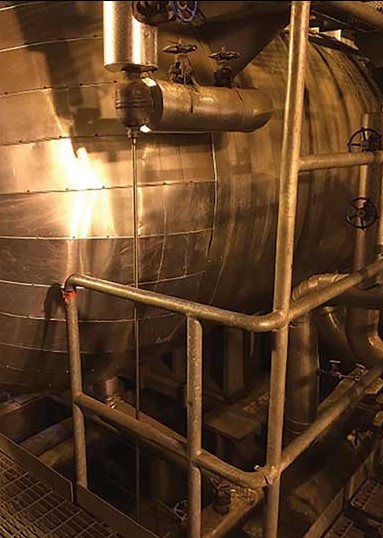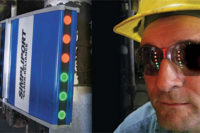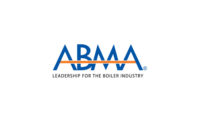As many business operations were idled during the pandemic, it may be an especially important time to inspect a boiler’s external piping that feeds the water level indicators and low-water devices.
Restrictions or contamination may develop over time in the water piping that is connecting a gage glass, water column, low-water fuel cutout, or remote level indicator. If a restriction becomes significant, it will result in a false level indication or potentially trapped level in the externally mounted instrument.
The concern for sediment buildup is most likely to occur in the water line or isolation valves, resulting from particulate in the boiler water or from erosion of the boiler internals or external piping over time. The risk is minimal in the steam piping.
Figure 2 illustrates how sediment can collect in water outlet piping.


The image in Figure 3 was taken after the actual blockage in the inlet area of a water isolation was discovered and punched out. This section of the valve was removed for educational purposes. Restrictions of this nature can often be discovered by removing the valve operating stem and physically rodding through the valve into the depth of the inlet connection.
This concern also applies to the piping between the boiler and the low-water fuel cutoff devices. Whenever possible, the piping to these devices should be inspected. The consequences of a restricted water feed pipe to a primary or secondary low-water device can have devastating results. To inspect these connections, it may be necessary to remove the device. On larger boiler drums, these connections may also be accessible for inspection from within the drum.


In addition, any sensing lines installed on differential pressure transmitters may become restricted over time and should be blown out during inspections. The relatively small size of the tubing on a typical differential pressure transmitter installation is visible in Figures 4 and 5.
The time devoted for a periodic inspection of the external piping and related connections for all of these instruments may prevent catastrophic damage to a boiler from overheating. The risk of boiler damage from overheating a boiler can range from minor tube damage to total destruction of the boiler.
The requirements in Section I and recommendations in Section VII of the American Society of Mechanical Engineers’ (ASME’s) Boiler and Pressure Vessel Code are excellent resources. Section I defines the minimum requirements for the following items.
• Minimum connecting requirements for water gage glasses and remote indicators;
• Minimum pipe sizing for connections and drains;
• Installation guidance to enable internal inspections by using fittings with back outlets at right-angle turns; and
• Piping requirements to prevent sagging or traps, and the application of appropriate valves.
Section VII provides helpful recommendations for proper care and operation of water level indicators, including these items.
• Observing the prompt return of the indicated water level after conducting a blowdown. If a change or unusual delay is observed by the operator, it would be a signal to investigate the piping and valve internals;
• Blowdown procedure recommendations for water level indicators; and
• Frequently comparing the water level between two independent level indicating instruments for confirmation. If a deviation occurs, the operator should investigate the cause without delay and determine which indication is accurate, and promptly remedy the other one.
Over the years, Clark-Reliance has assisted many users with solutions to water level indication deviations. Some issues resulted from debris buildup in the valves after conducting a boil-out (chemical cleaning) process on a boiler installation. Others have resulted from a lack of maintenance or by conducting blowdowns on the level instruments in a way that does not thoroughly flush the water leg. If the steam piping leg can be isolated near the drum and the water leg is blown down independently and periodically as part of the blowdown process, the risk of sediment buildup will be reduced.




